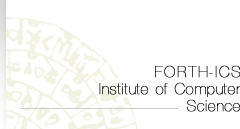Malware is any type of software
that can cause damage to computer systems without the owner's
consent. These include viruses, worms, trojan horses, spyware,
bugs.
To avoid any malware getting in your system, visit our
alerts section to stay informed
on latest virus threats. This way you can stay up to date
with software patches that vendors provide. Some vendors i.e.
Microsoft, Apple, provide automatic patch updating
of their software for security fixes.
Use anti-virus
software that automatically updates with antidotes to the
latest 'bugs'
that circulate the internet.
A firewall will also be
watching your system for outside intrusions trying to access
your data. It will block any incoming communication attempts
from and to the sources you
do not want.
You can run some security checks for your system here:
Symantec
for Windows
McAfee
for Windows
TrendMicro
for Windows and Linux
Audit
My Pc for Windows
What
impact can malware have on your business/systems?
An affected computer can slow down the system's processes
and eventually the productivity, resources and time that you
may need to dedicate to remove it.
Other impacts could include stealing your information and
your customers' information, increasing the number of spam
emails you receive as well as denial
of service or even deleting files.
How
can you tell when your system has been infected?
Most of the times you will realise it when your PC
takes time to switch on or in general whatever operations
you try to run would take more than the usual time to run
them.
In general there are no specific ways of telling, but users
who regularly use their PC
they can tell the difference when their behaviour changes.
It also depends on the type
of infection and what its side-effects are.
How to get
rid of an infection
If you are an employ in a company then inform the
IT department about the problem.
If you use a home computer then try to run an anti-virus programme
to see if it can catch it and remove it. It is best to disconnect
your computer from the network until you decide how you are
going to tackle it.
The malware culprits
There are some websites that are mostly responsible for any
malware infection found
in your PC.
Pornographic sites
Pornographic sites carry a load of spyware and trojan horses
ready to be installed
in your computer once you visit them. You can try some anti-spyware
software to be sure that they are blocked. Spyware
Blaster by JavaCool.
Illegal downloads
When downloading llegal music and movies from file sharing
sites, it is easy to have malware creeping in. They can install
cookies in your machine so that they can later
on track your browsing habits.
Fake online security products
Those products appearin a banner of a website that you are
visiting, telling you that
your security is poor and that your computer has been infected
and all you need
to do is to install those anti-virus or anti-spyware products
to keep you secure.
Those are just images so they do not even scan your computer
to check for malware.
If you download the software they are advertising, you are
most likely downloading
a spyware. You may as well infecting your clean computer by
trying to remove the so-called infection. To take matters
a deeper level, for a programme to tell whether
a system has been infected or not, needs to go through a system
scan which takes time so it is very unlikely that within seconds
that you visit a website that you get a warning that your
system contains an infection. The bottom line is do not trust
whatever you see online.
Email attachments
Opening email attachments from senders you do not recognize
is quiter risk, especially when dealing with attachments with
filenames ending with 'exe', 'com', 'scr' extensions. For
a virus to be activated you need to open the attachment.
Software piracy
Downloading illegal software license keys and cracks from
license generator websites may contain harmful scripts and
fake key generators which can only be malware.
Free games, screen savers
Unfortunately with almost every free software that you are
trying to get, malware comes with it. Again it is used to
monitor your online behaviour in order to send you targeted
advertisments.
The users
The user can be the biggest culprit if he/she does not have
an updated anti-virus package installed and checked periodically.
If he/she visits illegitimate sites and illegally downloads
music and movie files. In short, if you do all the above without
being responsible
and aware of the risks involved.
Target environments/carriers
For a malware to fulfill its purpose, it requires that certain
components exist to launch
an attack agains a host. These are:
Devices such as personal computers, personal
digital assistants, mobile devices.
Operating systems. Malware may require a
specific OS to be running in order
to be effective.
Applications. They might need specific applications
to be installed on the targeted host so that it can launch
its attack.
Carriers are the objects in which the virus is carried, also
known as hosts.
These are executable files that replicate
the virus by attaching itself to a host program.
They can have the following extensions: .exe, .com, .sys,
.dll, .ovl, .ocx, .prg.
Also attacks using scripts,
that is a scripting language such as Microsoft Visual Basic
Script, AppleScript, Perl Script.
They can have the following extensions: .vbs, .js, .wsh, .prl.
Macros used in a word processor, spreadsheet,
database application can use the macro
languages in Microsoft Word and Lotus Ami Pro to carry their
malicious acts such as formating a computer's hard drive ro
changing the workding in a document. Read
more
return
to top
|

